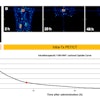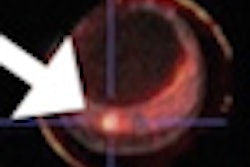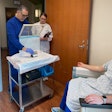Dear AuntMinnie Member,
One of the hottest new technologies in medical imaging is PET/MRI. New whole-body scanners are becoming commercially available as clinicians investigate the strengths and weaknesses of the hybrid technology, which offers functional imaging with better spatial resolution and lower radiation dose than PET/CT.
This week in our Molecular Imaging Digital Community, we're bringing you an article on a new wrinkle in PET/MRI: a work-in-progress scanner for breast imaging that's being developed through a collaboration between breast MRI company Aurora Imaging Technology and Brookhaven National Laboratory in the U.S.
The unit is being tested on human patients in clinical studies in China, where researchers have found it capable of detecting breast lesions smaller than 5 mm. In addition, the device's PET component can be used immediately to investigate suspicious lesions while the patient is still on the scanning couch. Learn more about the system by clicking here.
In other news, recent advances in imaging technology -- such as PET -- are offering hope that those with signs of Alzheimer's disease could be diagnosed earlier. While there is still no effective cure for the disease, earlier diagnosis could reduce uncertainty and avoid the use of more invasive biopsy techniques, according to an opinion piece by Dr. Gregory Sorensen, CEO of Siemens Healthcare. Read more by clicking here.
Minnies at midway mark
We've arrived at the midway point of nominations for the Minnies, AuntMinnie.com's annual event recognizing excellence in radiology.
By nominating someone for a Minnie award, you're taking time to make sure that the achievements of your peers receive wider recognition. Whether you have a teacher who influenced you, a scientific paper that changed the way you think about your discipline, or a product that helped you diagnose a patient more effectively, what better way to acknowledge their contribution?
Nominating is easy: just fill out a short form at minnies.auntminnie.com. Winners will be selected by our expert panel in two rounds of voting over the next several months. And if you've already submitted a nomination, thanks for participating!
Digital watermarks and 3D images
Data security is top of mind these days -- so what have you done to make sure your volumetric images are safe from tampering?
If you haven't thought about it, you might want to check out a new article in our Advanced Visualization Digital Community. Senior editor Erik L. Ridley describes a new software tool that places digital watermarks on 3D images to ensure they haven't been tampered with.
The technique is an improvement over past software tools developed by the group, which required a level of manual intervention that could slow down workflow at a busy 3D lab. The tool could become useful as practices increasingly rely on teleradiology to ship patient images to other locations for interpretation, according to the authors.
Learn more by clicking here, or visit the community at av.auntminnie.com.



















